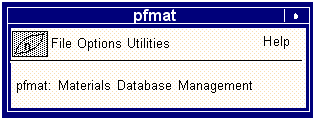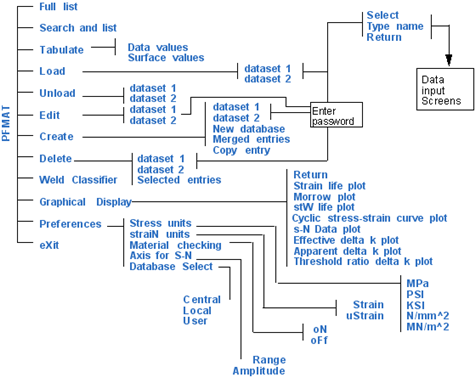XXXXXXXXXXXXXXXXXXXXXXXXXXXXXXXXXXXXXXXXXXXXXXXXXXXXXXXXXXXXXXXXXXXXXXXXXXXXXXXXXXXXXXXXXXXXXXXXXXXXXXXXXXXXXXXXXXXXXXXXXXXXXXXXXXXXXXXXXXXXXXXXXXXXXXXX''"> Introduction to PFMAT
PFMAT is a materials database manager which has been designed for use with MSC Fatigue, a fatigue life estimation system. The materials database to which it interfaces has a structure which supports all the materials data (listed below) associated with the three methods of fatigue life estimation:
• Monotonic data
• Stress-life data (including component and spot weld S-N curves)
• Strain-life data
• Cyclic stress-strain data
• Multi-environment crack growth data
By using this database, all users of MSC Fatigue have access to all the necessary data in one central location, thus ensuring the highest-quality design procedures for durability analysis.
PFMAT may be accessed from the Analysis form in MSC Fatigue Pre & Post or from the form displayed by selecting Tools | MSC Fatigue | Main Interface in MSC Patran by opening the Materials Information form and clicking the Database Manager button. It can also run by typing the symbol pfmat at the system prompt.
Once initiated, a set of screen displays which may be manipulated using the keyboard and mouse are presented to the user. A description of the way to use the screen displays is given in
Module Operations (Ch. 17) for the Motif and Mask drivers.
When first invoked with the motif driver PFMAT appears displaying two forms.
Figure 3‑1 PFMAT Utility Form
The top, small form is a generic form and allows for general program control. This is discussed in detail in
Module Operations (App. 17) for the Motif driver.
The menu structure for PFMAT is shown in
Figure 3‑2. The top menu contains options to additional submenus, such as the Graphical display option. This multi‑menu layering has been necessary to ensure the legibility of each menu.
Figure 3‑2 The PFMAT Menu Structure


